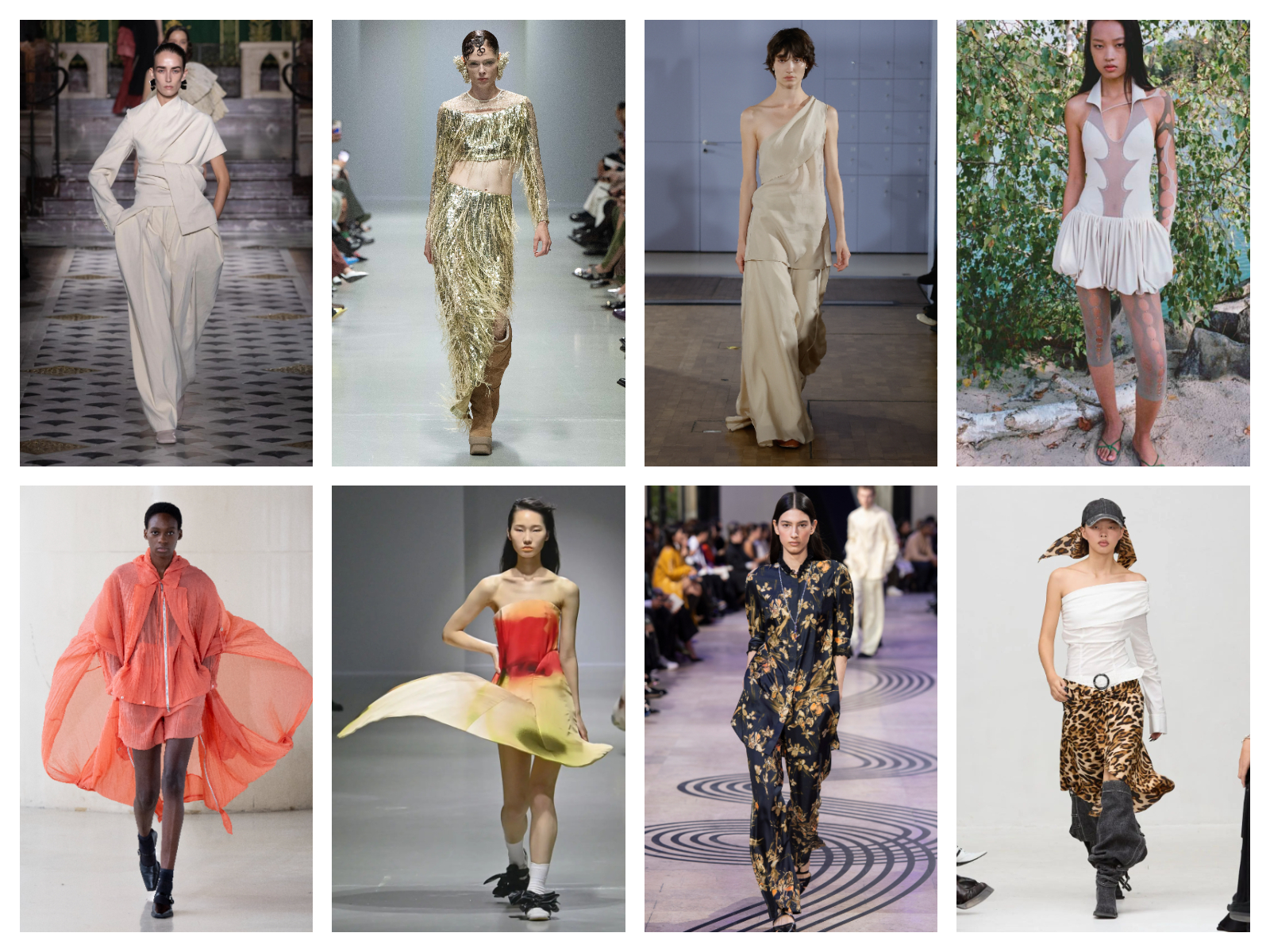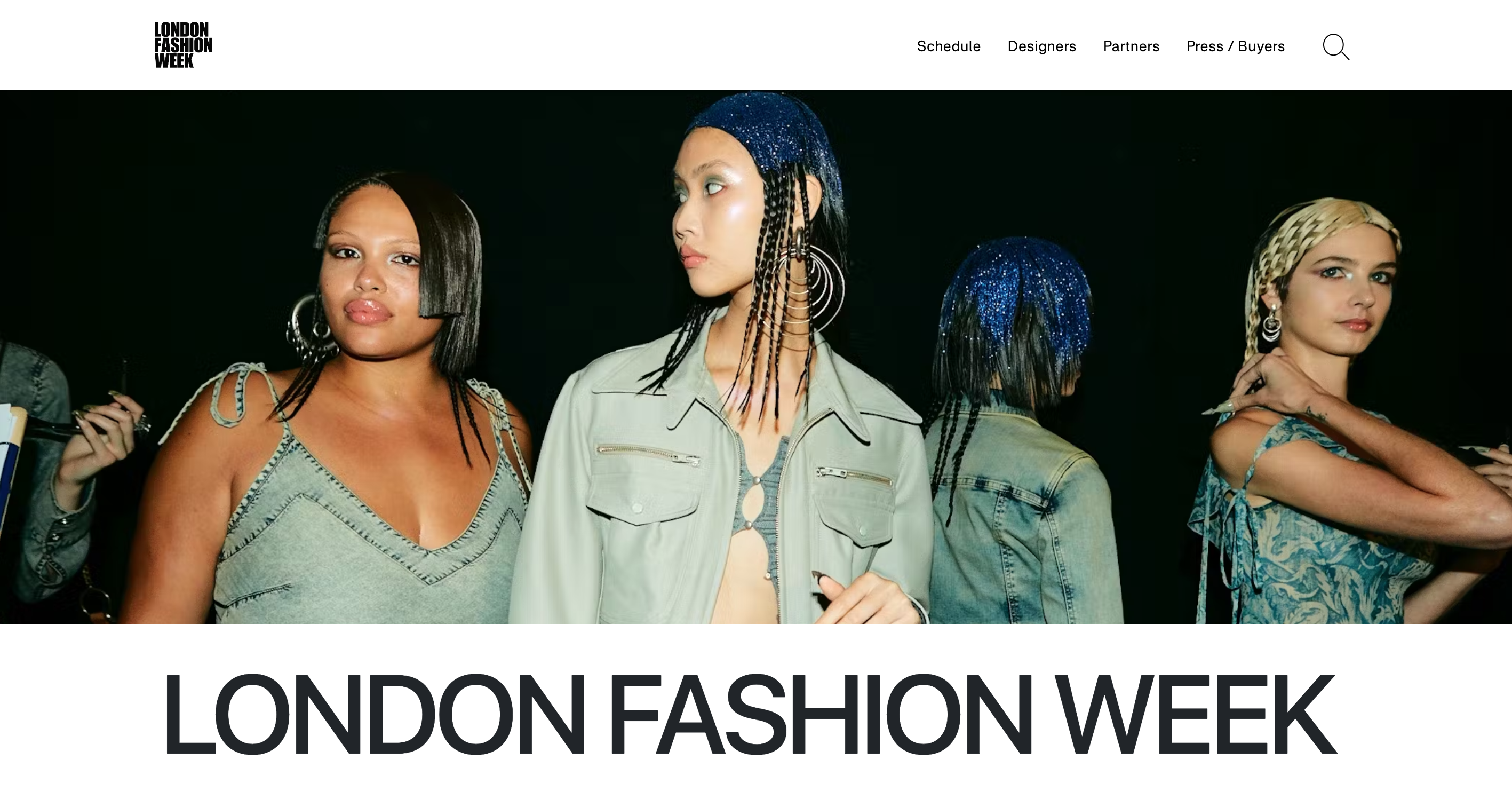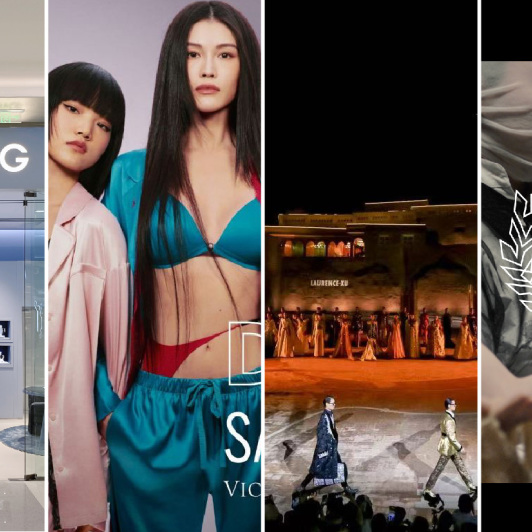Independent Chinese designers are increasingly incorporating deeper insights into Chinese cultural elements and regional humanistic characteristics into their co-branded collections, integrating these elements into collaborative product designs. This expression, rooted in local culture, has become the most unique and moving aspect of their creative work.
Over the past year (from July 2024 to the present), ten designer brands—AO YES (Wang Yingchao & Liu Yansong), CHENPENG (Chen Peng), CIGALONG (Long Zijia), CUNZU (Wu Di), Feng Chen Wang, Laurence Xu, L’ELEMENTO (Xue Zhangni), PRONOUNCE (Li Yushan & Zhou Jun), SHUTING QIU (Shuting Qiu), and Of Nature (Chen Xuzhi)—have collaborated with commercial brands on recent projects that fully embrace Chinese elements or regional cultural influences.
Luxe.CO delved into the details of these collaborations and found that designers are not only innovatively interpreting traditional Chinese craftsmanship and elements but also deeply exploring regional culture, breathing new life into it within the context of contemporary design.
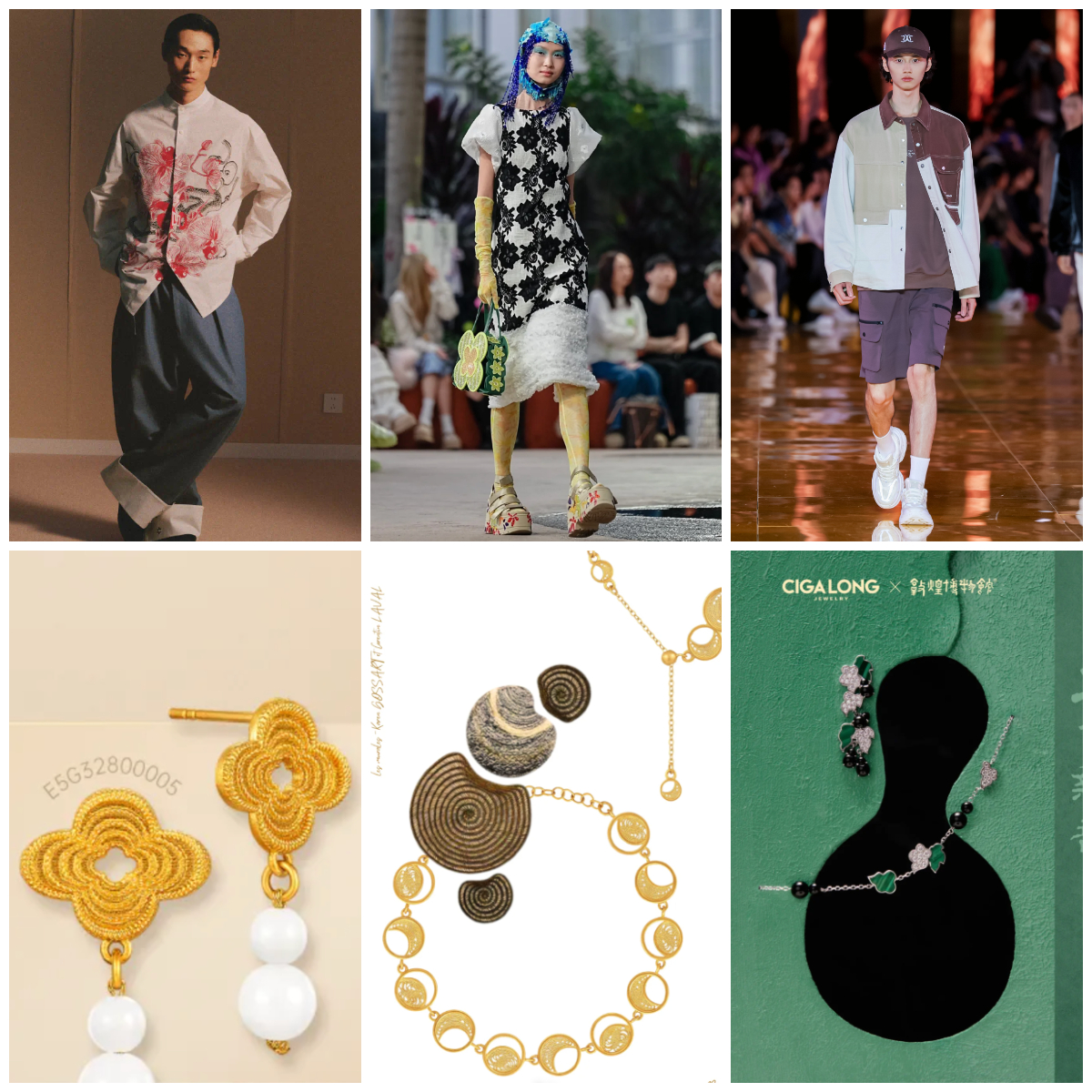
Innovative Interpretations of Traditional Cultural Elements
When incorporating Chinese elements, traditional patterns and zodiac symbols serve as key entry points. Products co-created by Chinese designers and commercial brands naturally carry deep cultural identity and emotional resonance, allowing brands to connect with local consumers while enhancing their storytelling capabilities quickly.
Chinese tea brand Xiaoguan Tea has launched its first bottled tea beverage, Xiaoguan Tea High-Fragrance Unsweetened Tea, featuring packaging designed by high-fashion designer Laurence Xu.

In this project, Laurence Xu infused the tea packaging with a unique sense of fashion and artistry through patterns, color schemes, and structural design. For example, the design was inspired by the “intertwined branch pattern” from a Qianlong-era enamel-painted floral and bird vase, which was reimagined as a “tea branch pattern.”
For the color palette, the product features culturally rich traditional Chinese colors such as imperial yellow, turquoise green, and copper red. The intricate patterns and vibrant hues together create a distinctive Chinese visual identity. The shoulder lines of the bottle were inspired by the classic “gaiwan” lidded tea bowl, a symbol of Chinese tea culture.
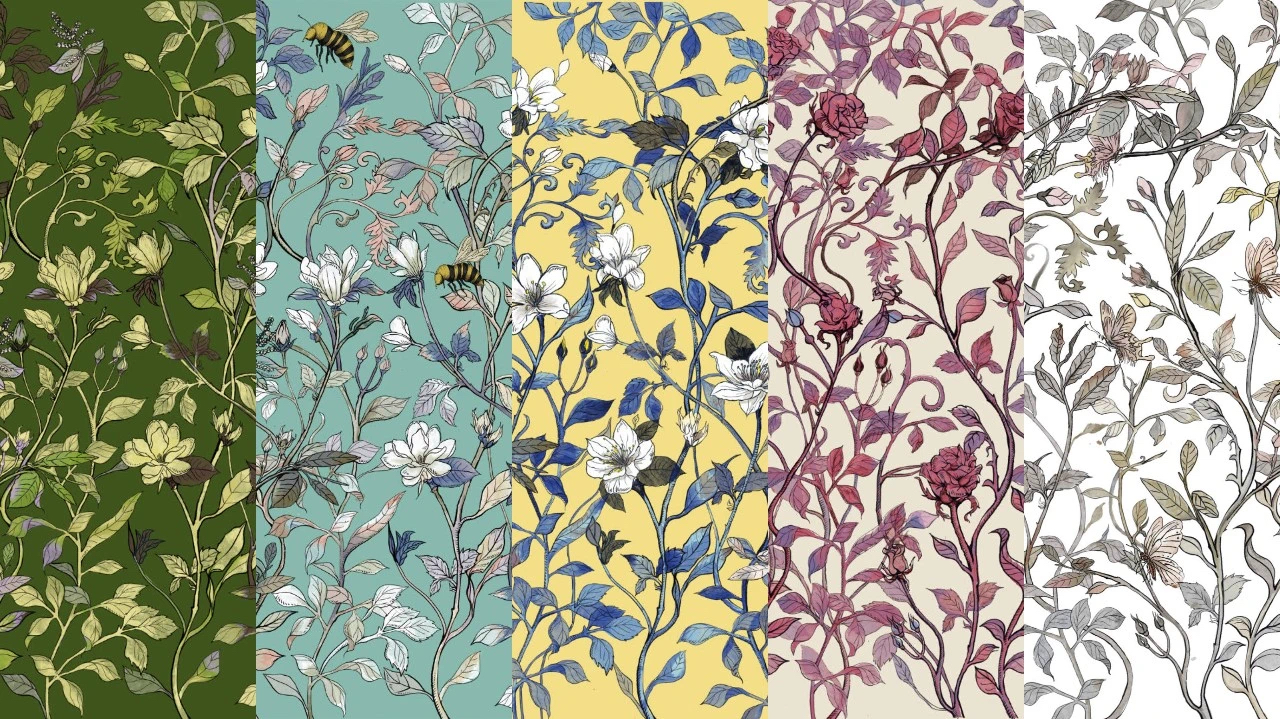
Jewelry brand CIGALONG (designer: Long Zijia), known for its Eastern aesthetics, partnered once again with the Dunhuang Museum for a new collaborative collection. The latest co-branded pieces draw on the color schemes of Dunhuang murals and incorporate traditional motifs such as the gourd and fine metal chasing techniques into the jewelry design.
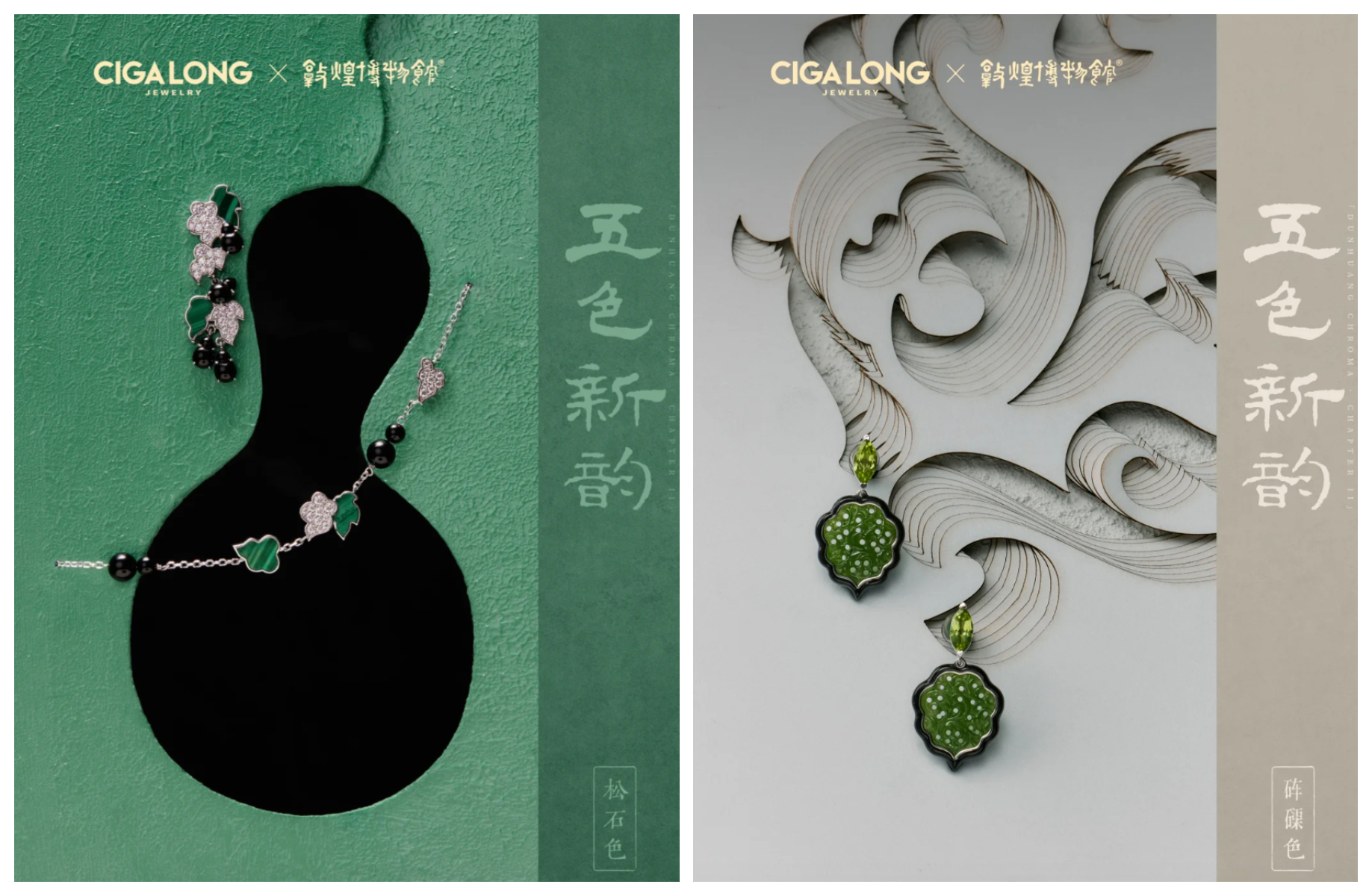
During major festive marketing campaigns such as Chinese New Year, zodiac symbols—rich with cultural significance—have become a frequently used element in designer-commercial collaborations. With the designers’ creative input, these zodiac signs are reinterpreted with fresh visual appeal.
For instance, designer brand SHUTING QIU (designer: Shuting Qiu) collaborated with LVMH’s premium spirits brand Hennessy on a 2025 Chinese New Year limited-edition series. Drawing inspiration from classical Chinese culture, Qiu created abstract floral motifs and snake-scale patterns echoing the Year of the Snake. These elements were applied to three Hennessy bottles, resulting in festive, limited-edition products.
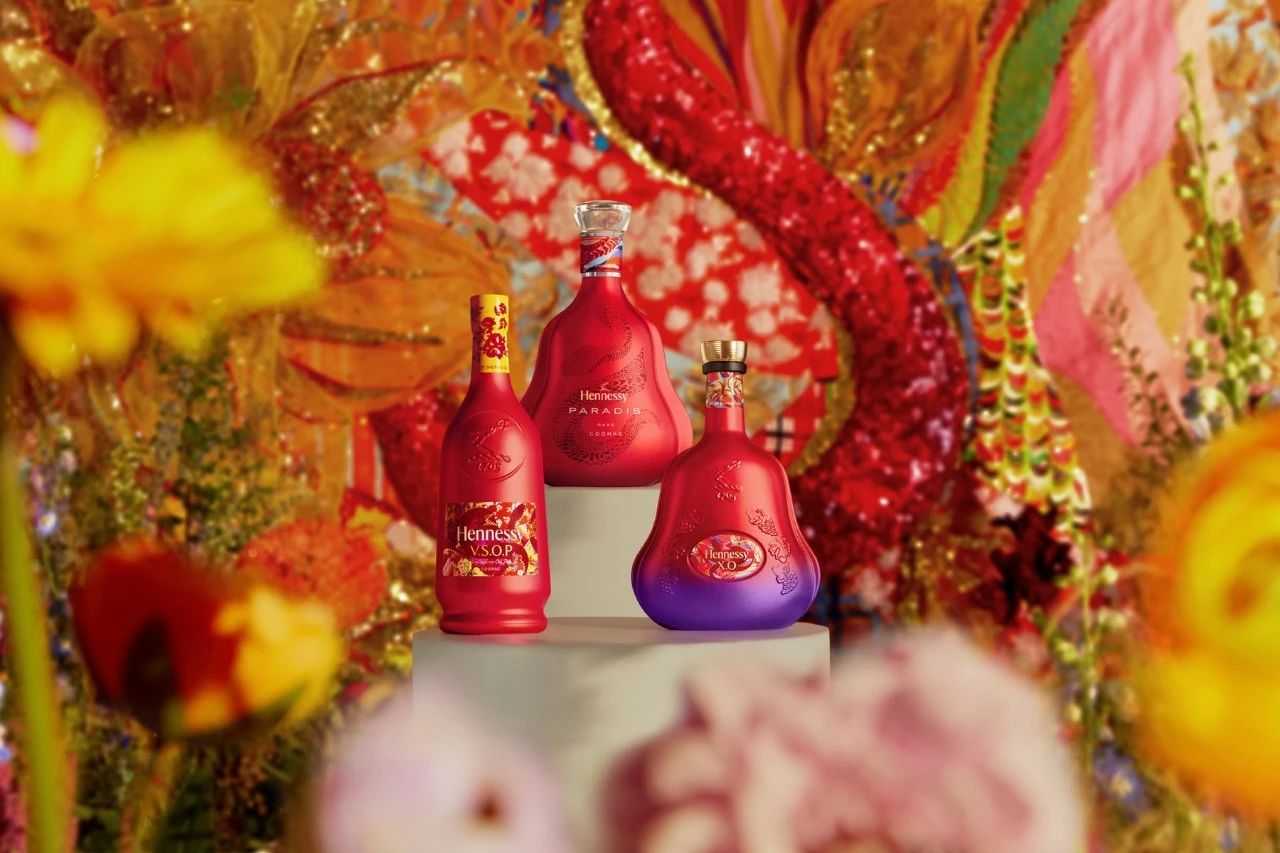
Also focusing on traditional symbolism is designer brand AO YES (designers: Wang Yingchao & Liu Yansong), which teamed up with fast fashion label Zara for a Year of the Snake collaboration—marking Zara’s fourth partnership with a local Chinese designer brand. This collection includes menswear, womenswear, and home products. The design concept drew from “Chinese Festival · Chinese Knot,” for which AO YES created original hand-drawn illustrations that cleverly incorporated the Chinese knot, zodiac symbols, and floral elements. The collection also skillfully blended traditional Chinese frog fastenings and bow details.
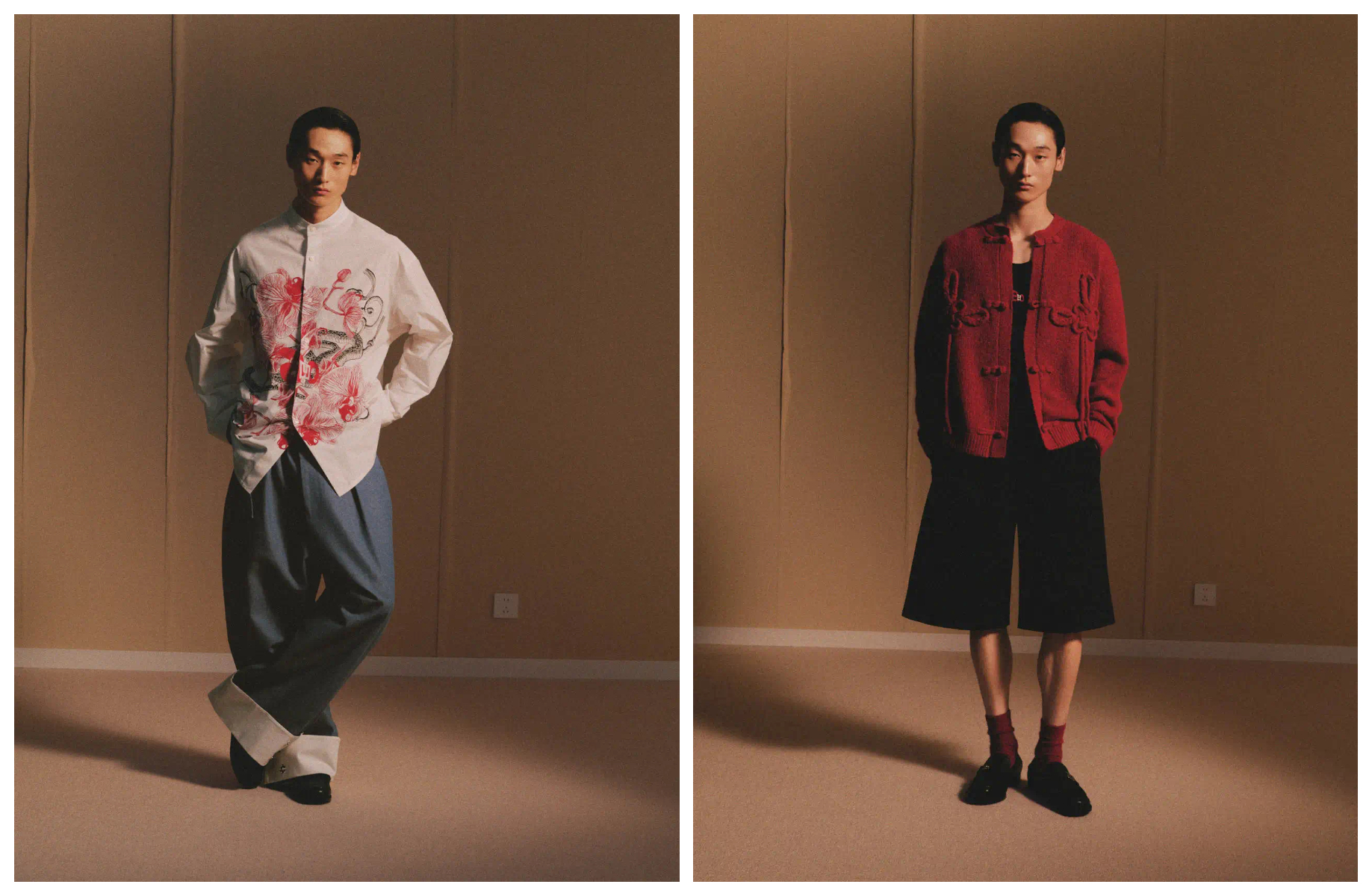
Deeply Cultivating Regional Culture and Local Identity
The emotional bond between people and their land is profound and irreplaceable. This connection is especially evident in the new generation of Chinese designers. Most of them grew up in the Chinese Mainland, pursued further education abroad, and are now active on the international stage. It is the unique urban landscapes and rich cultural heritage of China’s vast territories that continue to nourish their creative inspiration.
Designer Chen Peng is a representative figure in this regard. In multiple co-branded collaborations with commercial brands, he has often drawn inspiration from his hometown of Jingdezhen, China. For example, in his capsule down jacket collection titled “Chengqi,” created in partnership with Chinese menswear brand LILANZ, the concept was inspired by wood-fired ceramics from Jingdezhen. Chen Peng transformed the colors and textures of ceramics into a visual language of fabric, palette, and silhouette in the clothing design.

Similarly, to mark the 45th anniversary of the Mercedes-Benz G-Class off-road vehicle, Chen Peng again drew inspiration from his hometown. Using traditional blue-and-white porcelain from Jingdezhen, he created the art installation Shipo · Celadon Blue. The G-Class vehicle body was inlaid with 45,000 recycled and polished porcelain shards, complemented by elements such as stone and flowers.

Fujian-born designer Feng Chen Wang has long woven her connection to her hometown into the fabric of her work—whether in personal collections or brand collaborations. The emotional tie to her roots has become a recurring core theme of her design identity.
In her renewed collaboration with lifestyle brand Converse, Feng Chen Wang released two new co-branded styles of the low-top Chuck 70 “2-in-1” sneakers. The design was inspired by Jian ware, a form of millennium-old pottery native to her hometown in Fujian Province.
Jian ware, with a history dating back over a thousand years, develops distinctive “hare’s fur” and “oil spot” textures through firing at over 1,300 degrees Celsius. For this collaboration, the sneaker uppers were crafted using special techniques to recreate the glaze hues and textures of Jian ceramics. On her official social media, Feng Chen Wang wrote: “Jian teacups undergo ‘one color into the kiln, ten thousand colors out.’ Through this aged-finish process that mimics kiln transformation, we aim to preserve that unique texture of literati objects—something that withstands the wear of time.”

Also drawing from her hometown, Feng Chen Wang collaborated with Chinese fashion brand CABBEEN on the “Made in Hometown 3.0” Spring/Summer 2025 co-branded collection. This marks their third collaboration since the initial partnership in 2020, with creative inspiration once again rooted in their shared hometown—Fujian. The collection features color tones derived from traditional Fujian tea beverages, alongside elements drawn from the region’s coastal environment and native camellia flowers.
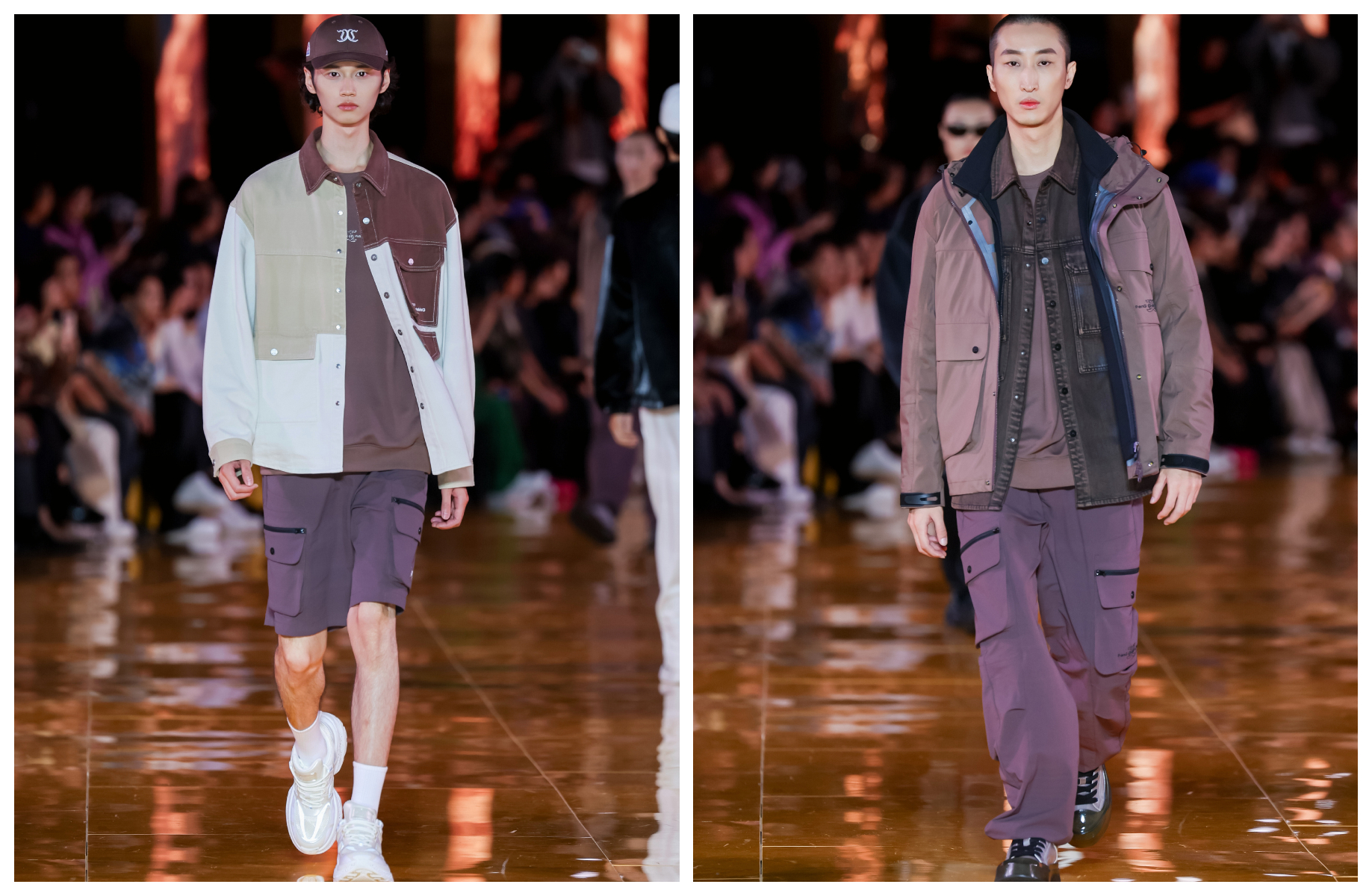
Equally committed to local culture is designer brand PRONOUNCE (designers: Li Yushan and Zhou Jun), who partnered with Chinese menswear brand LILANZ, which originated in Jinjiang, Quanzhou, Fujian. Their Spring/Summer 2025 capsule collection, titled THE ENDLESS HOLIDAY: Setting Sail, centers its inspiration on Quanzhou, the hometown of LILANZ.
PRONOUNCE drew inspiration from the carved three-dimensional ocean wave patterns on the ancient stone pagoda in Quanzhou, dating back to the Northern Song Dynasty. From this origin, the designers developed a motif connecting the ocean waves with the elliptical forms of surfboards seen in coastal urban life. The resulting three-dimensional wave patterns and oval shapes were extensively applied to short-sleeve shirts and outerwear in the collection, together portraying a youthful, energetic image evocative of “setting sail.”
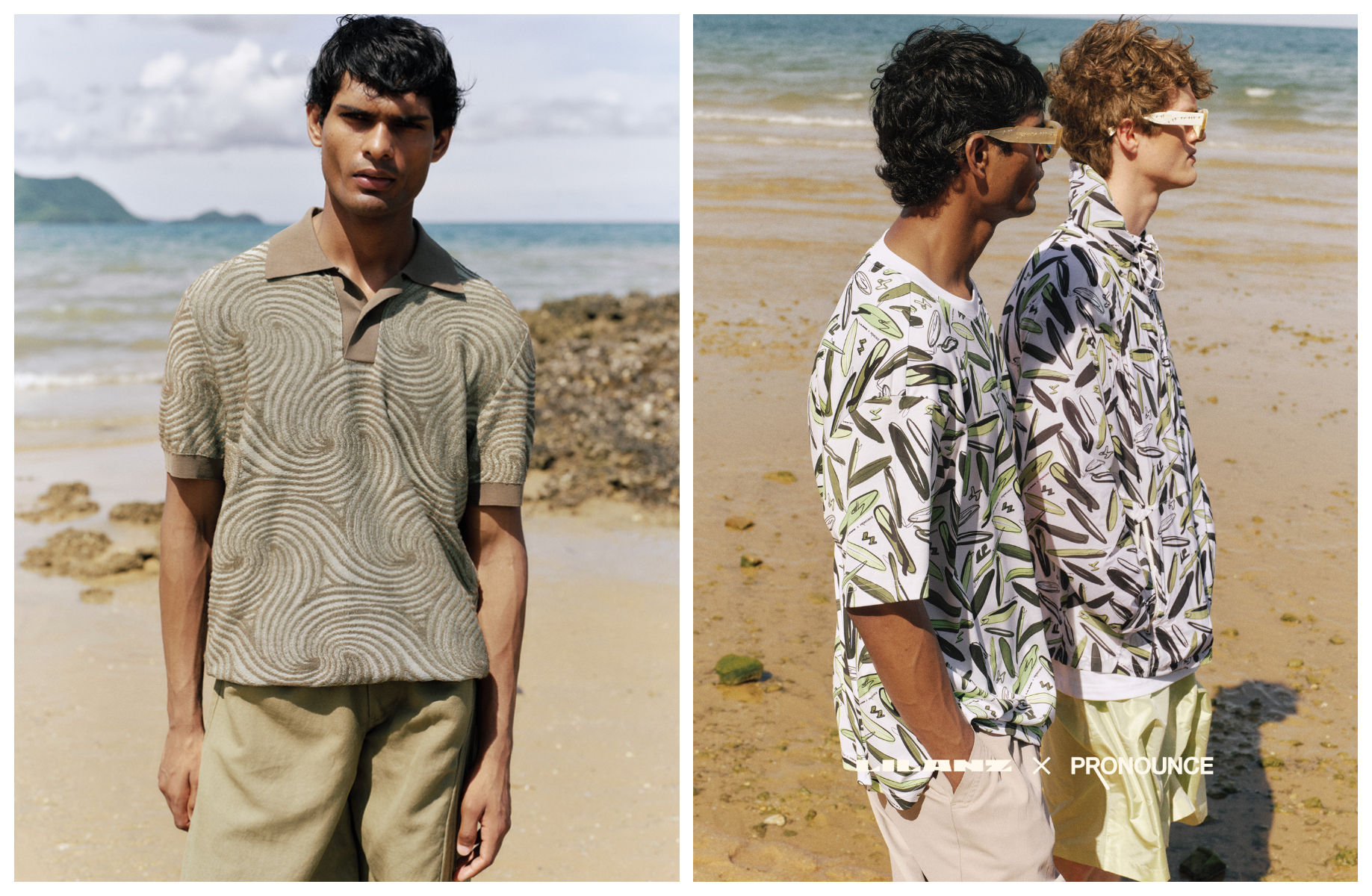
Renowned for her distinctive use of weaving and fringe, fashion designer Chen Xuzhi co-founded the Oriental fragrance brand Of Nature (序之 Of Nature) at the end of last year, alongside three founding partners. The brand draws deeply on Chinese cultural elements for both product and packaging.
Recently, Of Nature extended this vision of Eastern aesthetics into the hospitality realm, collaborating with Dunhuang Biyue Hotel, the first SLH member hotel in Northwestern China, to create a limited themed experience. In this immersive fragrance experience, guests can enjoy an exclusive scent centered on Sichuan pepper leaf, a signature of Gansu, and participate in a hands-on experience recreating the ancient incense blend “Xun Yi Xiang” from the Mogao Caves’ Sutra Library. Participants could craft their own custom “Dunhuang Fragrance” during their stay.
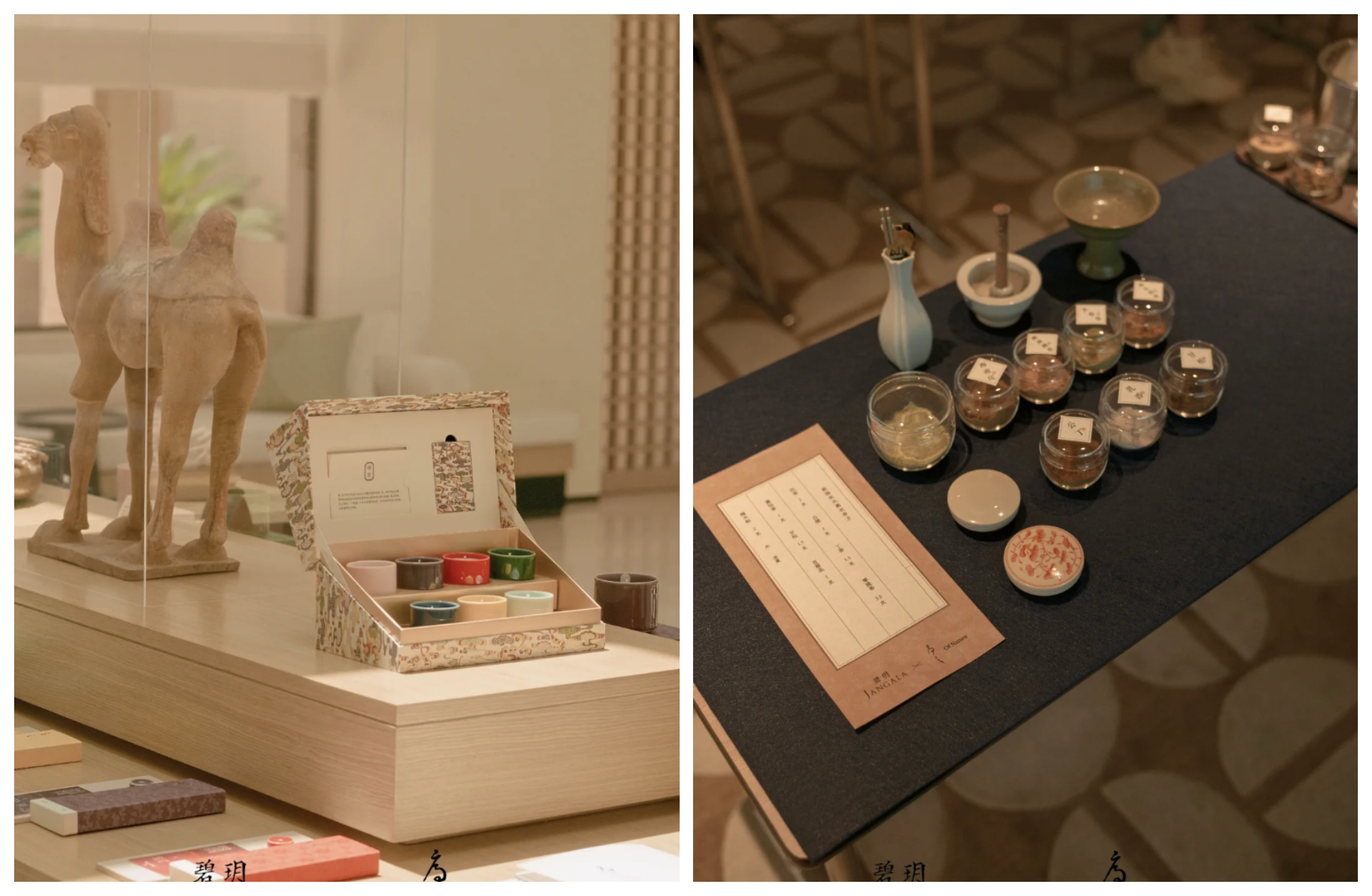
Contemporary Interpretations of Traditional Craftsmanship
Rooted in millennia of civilization, traditional Chinese craftsmanship is both a continuation of Eastern aesthetics and a crystallization of national wisdom. When collaborating with commercial brands, Chinese designer labels boldly innovate upon these heritage techniques, building on their essence. This not only offers commercial brands a distinct storytelling approach but also revitalizes the cultural and commercial value of traditional craftsmanship.
For instance, in the Silken Moon Phases series, jointly developed by jewelry brand Chow Sang Sang and CUNZU (designer: Wu Di), the two utilized the “lightweight wire inlay” technique to outline various lunar phases. Notably, while traditional filigree craftsmanship is known for its ornate, intricate designs and rich detailing, this collection embraced a more modern, minimalist approach, emphasizing negative space with the concept of “revealing through absence.”
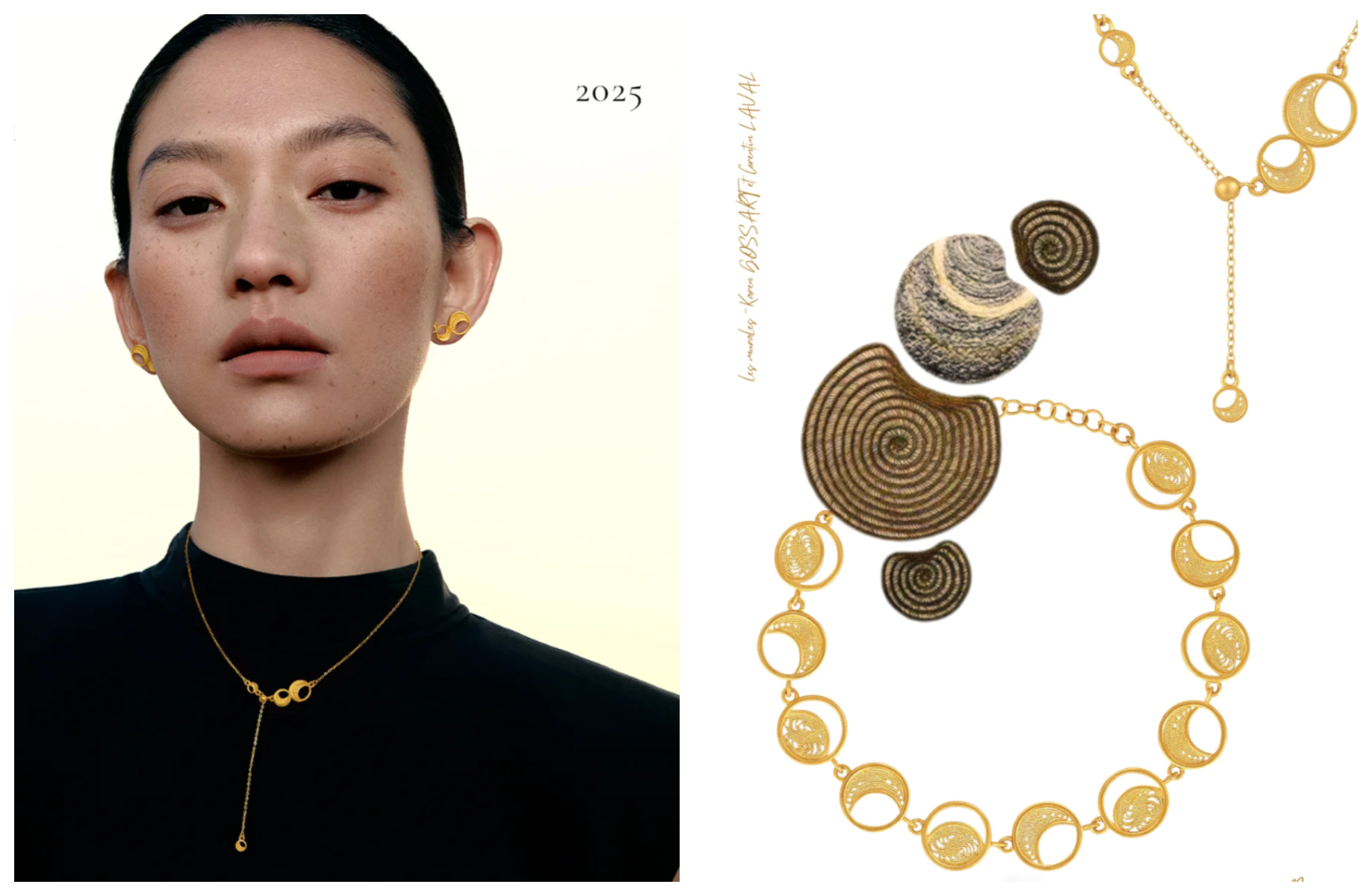
Also focusing on intangible cultural heritage filigree techniques, Chow Sang Sang collaborated with gemstone jewelry brand L’ELEMENTO (designer: Xue Zhangni) on the Filigree Begonia collection. Inspired by the traditional Chinese “begonia pattern,” the series combines gold with jade, integrating both filigree and jade carving—two UNESCO-recognized crafts. The designs employ a subtractive method in the jade carving to shape the form, and an additive technique through filigree to embellish the details.
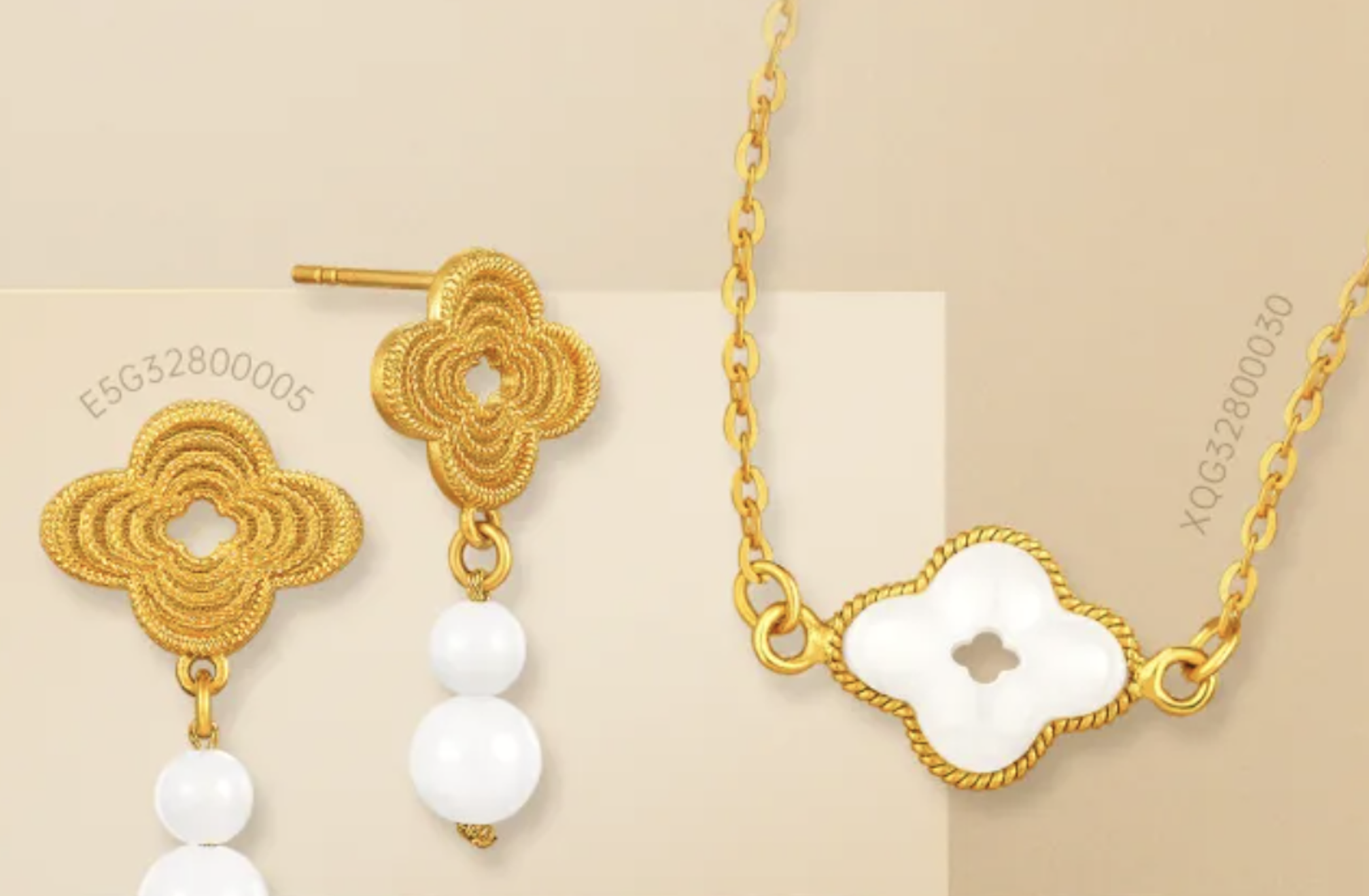
In footwear, UGG is often associated with sheepskin and chunky soles. However, designer brand SHUTING QIU (Shuting Qiu), known for intricate florals and embroidery, brought a completely new aesthetic to UGG footwear by fusing intangible cultural heritage embroidery with sequin floral motifs. The result is a collection that offers a fresh and uniquely expressive visual identity for the brand.

| Image Credit: Official accounts of each brand
| Editor: Zhu Ruoyu

